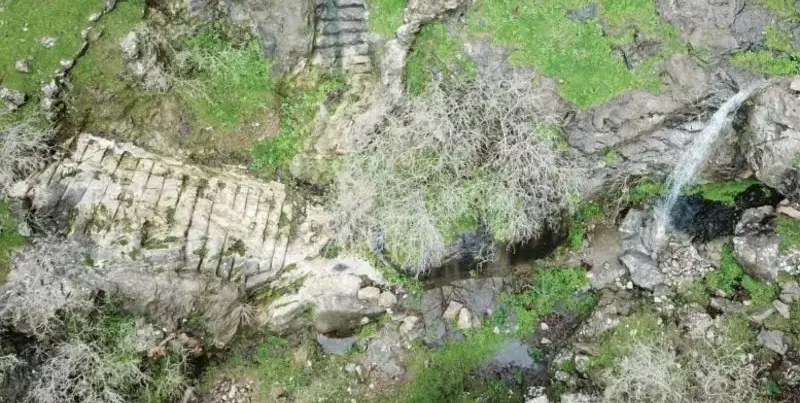Archaeological excavations in Iraqi Kurdistan have revealed a sanctuary dedicated to Anahita, the goddess of water. The ancient mountain settlement of Rabana Merculi in present-day Iraqi Kurdistan, in addition to being a fortress for military purposes, may also have been a “sanctuary” dedicated to the ancient Persian water goddess Anahita. Dr. According to Michael Brown, architectural structures near a natural waterfall and the remains of a possible fire altar indicate the existence of a place of worship.
A researcher from the Institute of Prehistory, Protohistory and Ancient Near Eastern Archeology at the University of Heidelberg led excavations there for several years.
The mountain fortress of Rabana Merculi was an important regional center of the Parthian Empire, which expanded into parts of Iran and Mesopotamia about 2000 years ago. Located on the southwestern slopes of Mount Piramagrun in the Zagros Mountains, this region has not only approximately four kilometers of city walls, but also two small settlements from which it takes its name.
As part of multiple excavations carried out since 2009 and most recently from 2019 to 2022, an international research team has been examining the archaeological remains in the area. A rock relief overlooking the fortified entrance to Rabana depicts an unnamed ruler, most likely a local Parthian king who founded this site. Researchers also discovered a religious complex in the Rabana Valley that may have been dedicated to the goddess Anahita.
Cult of Anahita
Anahita, the goddess of water, is first mentioned in a collection of manuscripts of the Zoroastrian religion called the Avesta. There he appears as the celestial source of all water on Earth; She is described as a beautiful, larger-than-life woman who can take the form of a flowing stream or waterfall. The cult of Anahita was highly revered in the western regions of Iraq during the Seleucid and Parthian periods.
The hypothesis that the possible sanctuary of Anahita is part of the Rabana Merculi mountain fortress is based mainly on the finds of architectural extensions in the natural environment of a seasonal waterfall located on the territory of the fortress. Researchers also discovered nearby an altar-like statue carved into the hillside, where sacrifices or fat may have been burned. “The proximity of the waterfall is important because the combination of the elements of fire and water played an important role in pre-Islamic Persian religion,” says Michael Brown.
In this area, in 2022, archaeologists will date B.C. There are ruins of a building where two characteristic funerary vessels were found with radiocarbon dating to the second and first centuries. This indicates that the mausoleum was used during the period when the fortified settlements of Raban and Merculi emerged. Dr. According to Brown, a temple incorporated into the Anahita cult may already have existed in the Parthian period, and this may have played a key role in the occupation of the mountain.
The Heidelberg archaeologist explains that many religious sites at the time also functioned as places where dynastic cults were held in honor of the king and his ancestors. Worshipers approaching the “sanctuary” were passing under the rock relief of the ruler and were no doubt aware of the strong connection between the place, the royal family and the cult. “Although the cult site cannot be definitively attributed to the water goddess Anahita due to the lack of similar archaeological finds for direct comparison, the Rabana sanctuary still provides us with a fascinating glimpse into regional sacred and geopolitical relations in the Parthian period,” says Dr.













